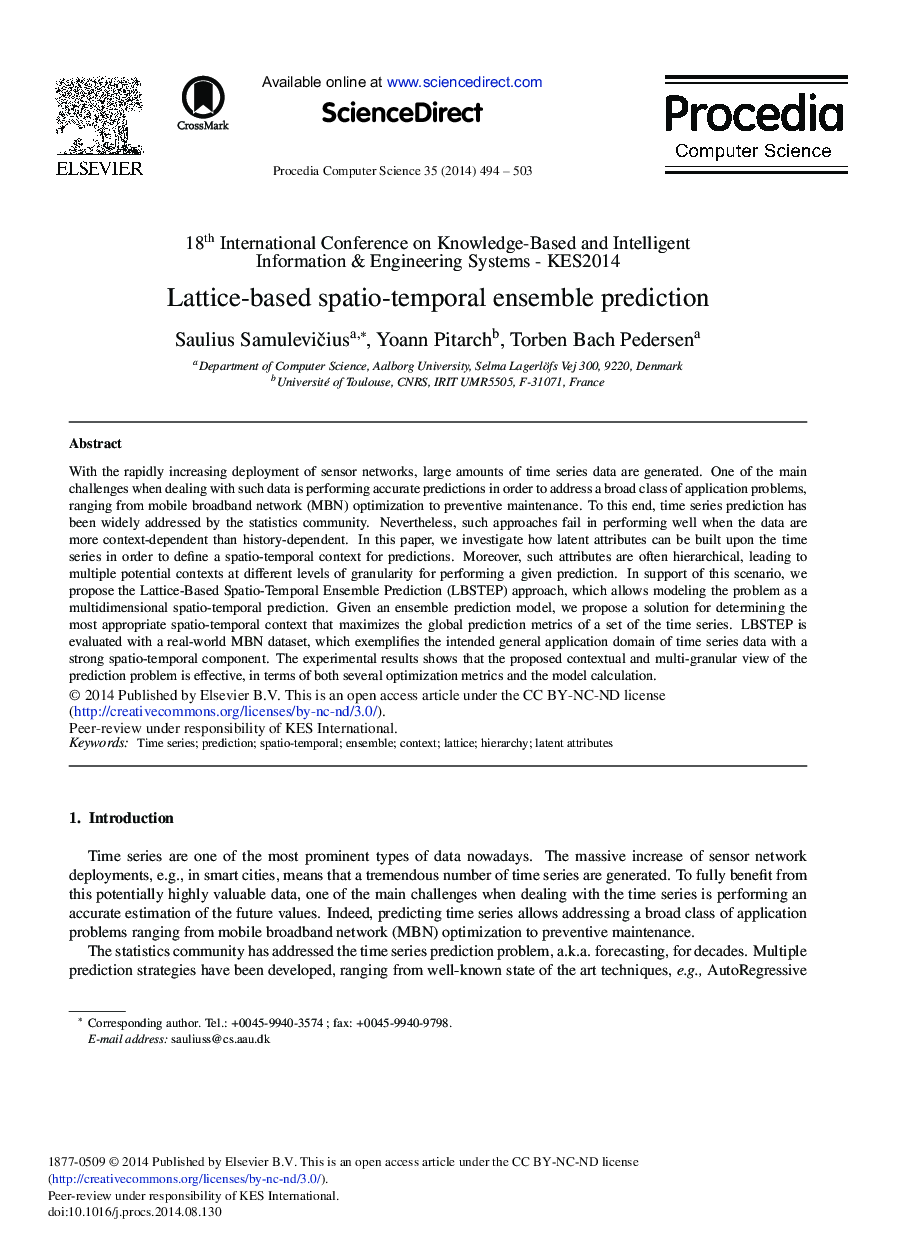| کد مقاله | کد نشریه | سال انتشار | مقاله انگلیسی | نسخه تمام متن |
|---|---|---|---|---|
| 488821 | 703943 | 2014 | 10 صفحه PDF | دانلود رایگان |

With the rapidly increasing deployment of sensor networks, large amounts of time series data are generated. One of the main challenges when dealing with such data is performing accurate predictions in order to address a broad class of application problems, ranging from mobile broadband network (MBN) optimization to preventive maintenance. To this end, time series prediction has been widely addressed by the statistics community. Nevertheless, such approaches fail in performing well when the data are more context-dependent than history-dependent. In this paper, we investigate how latent attributes can be built upon the time series in order to define a spatio-temporal context for predictions. Moreover, such attributes are often hierarchical, leading to multiple potential contexts at different levels of granularity for performing a given prediction. In support of this scenario, we propose the Lattice-Based Spatio-Temporal Ensemble Prediction (LBSTEP) approach, which allows modeling the problem as a multidimensional spatio-temporal prediction. Given an ensemble prediction model, we propose a solution for determining the most appropriate spatio-temporal context that maximizes the global prediction metrics of a set of the time series. LBSTEP is evaluated with a real-world MBN dataset, which exemplifies the intended general application domain of time series data with a strong spatio-temporal component. The experimental results shows that the proposed contextual and multi-granular view of the prediction problem is effective, in terms of both several optimization metrics and the model calculation.
Journal: Procedia Computer Science - Volume 35, 2014, Pages 494-503